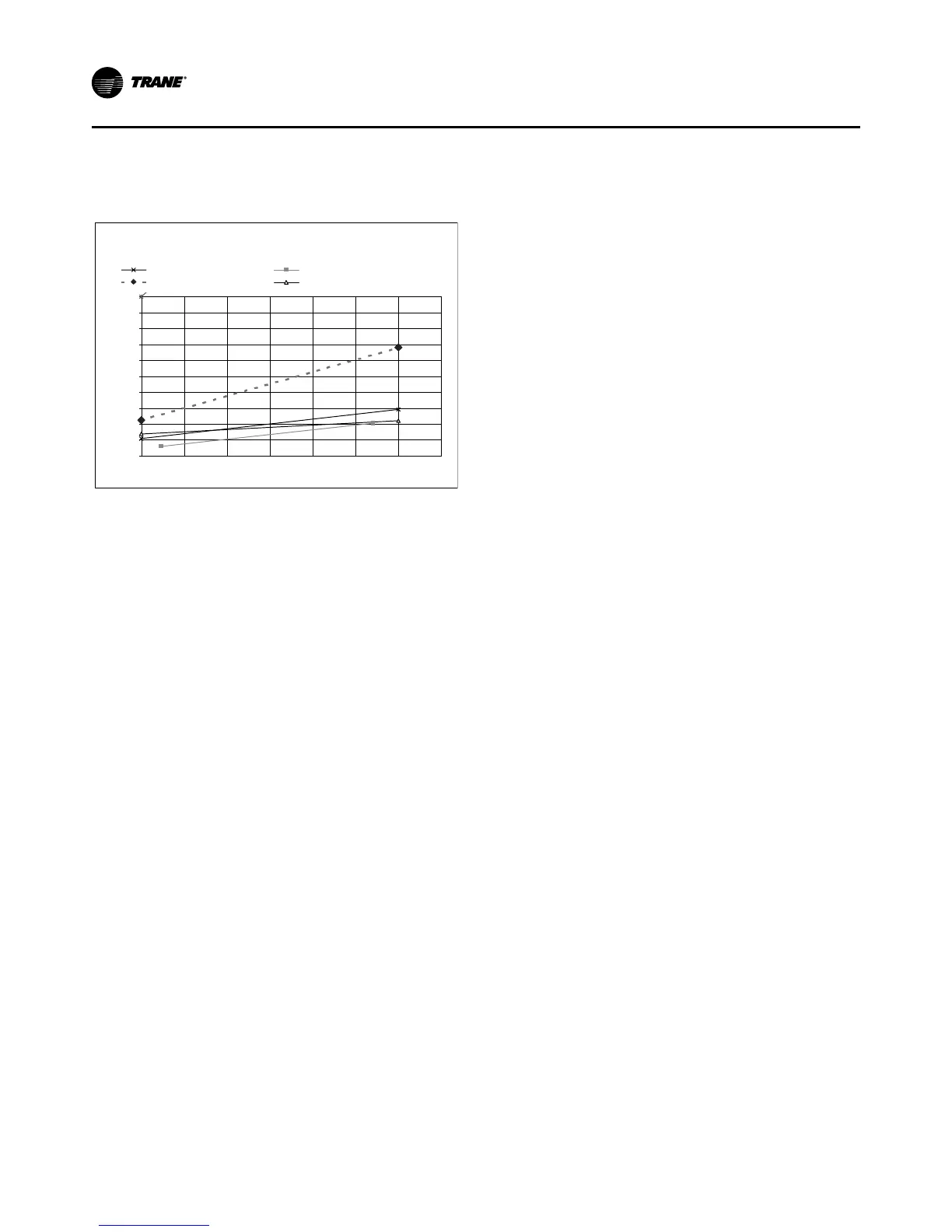60
Condensing Press - Suction Press (psid)
Oil Filter Press Drop (psid)
D- and E-Frame Normal Press Drop C-Frame Normal Press Drop
Max Pressure Drop B-Frame Normal Press Drop
Refrigerant Charge
If a low refrigerant charge is suspected, first determine
the cause of lost refrigerant. Once the problem is re-
paired follow the procedures below for evacuating and
charging the unit.
Evacuation and Dehydration
1. Disconnect ALL power before/during evacuation.
2. Connect the vacuum pump to the 5/8” flare connec-
tion on the bottom of the evaporator and/or condens-
er.
3. To remove all of the moisture from the system and to
insure a leak free unit, pull the system down below
500 microns.
4. After the unit is evacuated, perform a standing rise
test for at least an hour. The pressure should not rise
more than 150 microns. If the pressures rises more
than 150 microns, either a leak is present or moisture
is still in the system.
Note: If oil is in the system, this test is more difficult.
The oil is aromatic and will give off vapors that
will raise the pressure of the system.
Refrigerant Charging
Once the system is deemed leak and moisture free, use
the 5/8” flare connections at the bottom of the evapora-
tor and condenser to add refrigerant charge.
Refer to Table 4 - Table 7 and Unit nameplate for Refriger-
ant charge information.
Freeze Protection
For unit operation in a low temperature environment,
adequate protection measures must be taken against
freezing. Adjusted settings and recommended ethylene
glycol solution strengths are contained in Table 31 as
follows:
